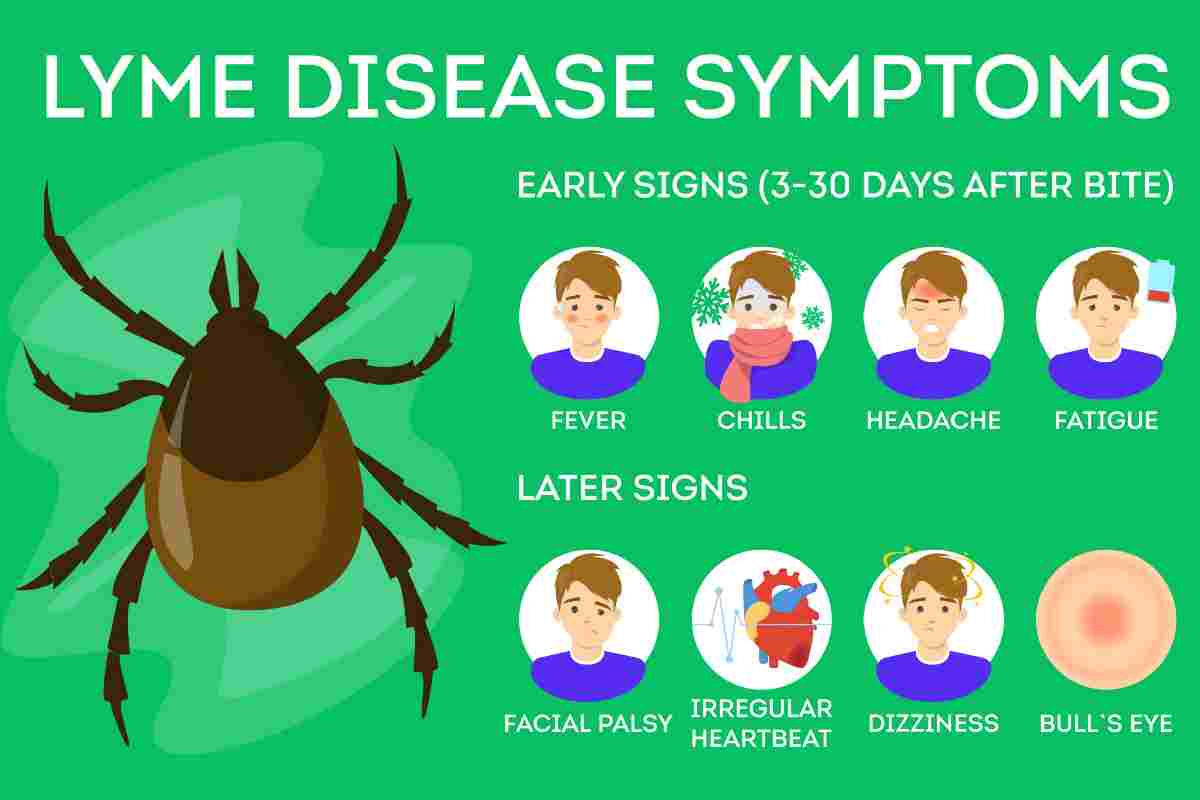Four primary bacterial species cause Lyme disease and its Symptoms. In America, Lyme disease remains mainly brought on by Borrelia burgdorferi and Borrelia mayonii, but in Europe and Asia, it remains primarily brought on by Borrelia afzelii and Borrelia garinii. Lyme disease, the most prevalent tick-borne disease in these areas, is spread by biting an infected black-legged tick, sometimes known as a deer tick.
Suppose you reside in or frequently visit the green, densely forested regions where ticks that transmit Lyme disease flourish, your risk of contracting the illness increases. In tick-infested locations, it’s crucial to use common sense caution.
Table of Contents
Lyme Disease Symptoms
The signs and symptoms of Lyme disease differ. They usually appear in stages, but the steps can overlap.
A small, red bump, similar to the spot of a mosquito bite, often appears at the site of a tick bite or tick removal and resolves over a few days. This regular occurrence doesn’t designate Lyme disease. However, these signs and symptoms can happen within a month after you’ve remained infected:
Rash. From three to 30 days after an ill tick bite, an expanding red area might appear that sometimes clears in the centre, forming a bulls-eye pattern. The rash expands slowly over days and can spread to 12 inches (across. It’s characteristically not itchy or painful but might feel warm to the touch.
Erythema migrans are one of the hallmarks of Lyme disease, although not everyone with Lyme disease develops the rash. Some people develop this rash in more than one place on their bodies. Other signs. Fever, chills, fatigue, figure aches, headache, neck stiffness and distended lymph nodes can accompany the rash.
Lyme Disease Causes
In the United States, Lyme disease is produced by the bacteria Borrelia burgdorferi and Borrelia, carried primarily by black-legged or deer ticks. Young brown ticks are often no bigger than a poppy seed, making them nearly impossible to spot. Contract Lyme disease, an ill deer tick must bite you. The bacteria arrive on your skin through the bite and eventually enter your bloodstream.
In most cases, a deer tick must be attached for 36 to 48 hours to transmit Lyme disease. If you find an attached tick that appears swollen, it may have fed long sufficient to transmit bacteria. They are removing the tick as soon as likely might prevent infection.
Lyme Disease Treatment
Lyme disease remains best treated in the initial stages. Treatment for early localized disease is a simple 10- to 14-day course of oral antibiotics to eliminate the infection.
Medications used to Treat Lyme Disease Include:
Doxycycline, amoxicillin, or cefuroxime, which are first-line treatments in adults and children
Cefuroxime and amoxicillin, which remain used to treat people who are breastfeeding
Intravenous (IV) antibiotics remain used for some forms of Lyme disease, including those with cardiac or central nervous system (CNS) involvement. After improving and finishing the treatment course, healthcare professionals will typically switch to an oral regimen. The whole system of treatment usually takes 14 to 28 days.
Lyme arthritisTrusted Source, a late-stage symptom of Lyme disease that may present in some people, is treated with oral antibiotics for 28 days.
How Is Lyme Disease Diagnosed?
It can be stimulating for doctors to diagnose Lyme disease because:
- The tick bites and rash might not remain noticed.
- Many initial symptoms seem like the flu or other illnesses.
- Blood tests can help diagnose Lyme disease later in the condition, several weeks after it started.
- Doctors can diagnose initial Lyme disease if they see a tick bite or the telltale rash, especially if the being lives in an area anywhere Lyme disease remains common.
To diagnose late Lyme disease, doctors:
- Ask about symptoms.
- Do lifeblood tests that look for signs of Lyme disease.
- Depending on the symptoms, doctors might instruct other tests, such as a spinal tap, which looks at the fluid around the brain and spinal cord.
Conclusion
Fever, headaches, exhaustion, and an erythema migrans-like skin rash are typical symptoms. Infection can feast on joints, the heart, and the neurological system if not treated. Lyme disease is identified based on symptoms, physical signs (such as a rash), and the potential for tick exposure. Symptoms of untreated Lyme disease can vary widely depending on the infection’s stage. These symptoms include arthritis, rashes, facial paralysis, and fever.

